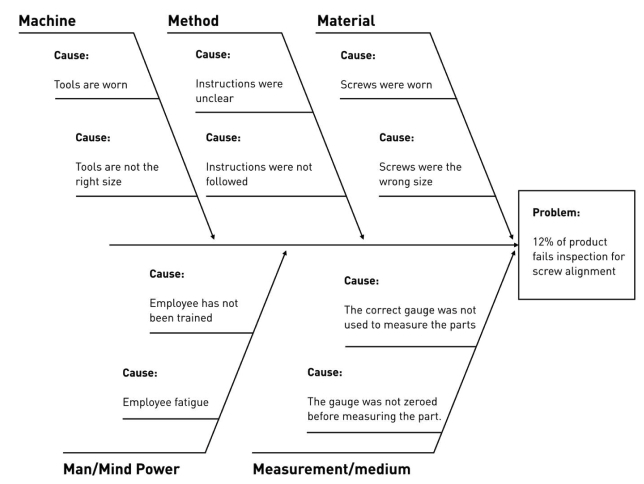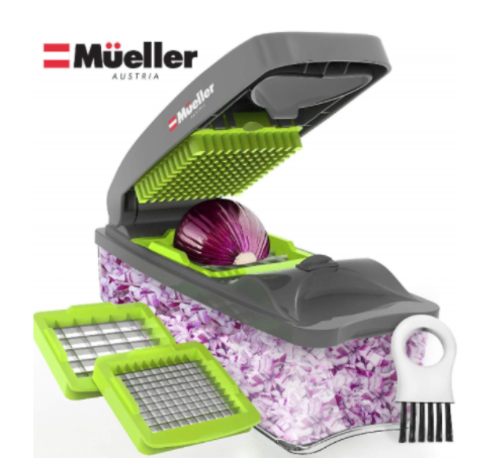
About two or three times a month, a client tells us about serious issues they have experienced with a certain product, and they ask if we can help fix those product quality issues. In some cases, it is relatively quick and easy. In others, it may involve deep changes, including a re-design of the product itself!
Understanding the cause(s) before trying to fix them
If there is a seemingly obvious reason for the quality issue, go ahead and work on it.
For instance, if two parts that are glued together tend to separate after a few weeks, the glue picked by the manufacturer is probably a problem. From there, follow logical steps:
- Gather information, and in most cases, you will need to pick another glue.
- Put some samples together with the new glue and send them to a reliability testing lab for validation that it will do the job as needed.
- Document that new requirement (what glue to use) and set up adequate testing to verify it.
If there is no one cause that looks like an obvious candidate, it is good practice to draw a cause & effect diagram and brainstorm potential issues. Here is an example (Source).
Note: I wrote before about a complete process for ensuring a product quality defect is fixed at the root and is less likely to recur in the future (see How To Fill Out an 8D Report and Fix a Problem in a Factory).
3 common categories of causes of product quality issues
Now, there are many types of scenarios, depending on the type of issue. Let’s look at three common categories of causes of product quality problems.
a) A relatively simple manufacturing process issue
Let’s say a product includes a lot of accessories that have to be packed in the right mix and the right number. In a traditional manual process, there will probably be mistakes about 2 to 8% of the time. From there, the solution could involve either of these approaches:
- Involvement of a process engineer who will design simple tooling to guide the operators. For example, the operators would have to prepare a “kit” (and, if something is missing, it will be immediately visible). For even better control, the boxes could be weighed before shipping. It is an inexpensive solution, but it takes management to change the operators’ habits — and, in case of a big rush, they will probably skip that kitting step.
- Investment in an automatic packing machine that will manage special/complex assortments. This necessitates an outlay of cash, but it may provide a good return on investment. It doesn’t call for much management effort, but engineers will need to work on its setup as well as preventive maintenance.
None of this is very complex. It can often be implemented within a month.
There are many such issues, such as:
- A drilling fixture allows the operator to place the part in several directions (calling for mistake proofing),
- Production operators haven’t been trained properly, and the method hasn’t been documented, leading to inconsistent work,
- A mold was signed off even though it generates defects, and it needs to be adjusted,
- And many, many others.
b) A complex manufacturing process issue
Some immature processes can’t produce consistently good quality products. Defective parts have to be sorted out, and in some cases 20% or more of the parts are unacceptable. That’s a source of frustration for customers since some of those bad parts will certainly go undetected and be shipped out. It is also a source of very high costs for the manufacturer.
In some cases, it is not even sure there is a solution. Remember Apple found a supplier who was confident they could bring sapphire glass into mass production, a few years ago? That supplier tried very hard, but the technical obstacles proved unsurmountable and they went bankrupt.
Those issues often come up in physical & chemical processes that involve a lot of variables. Introducing a change might result in worse overall issues.
To simplify, there are several schools of thought here, but a logical approach in several steps would look like this:
- Try to learn as much as possible about the process by doing OFAT (changing only one factor at a time) experiments and observing the results. (If that doesn’t work, you will need to change multiple factors at a time, but the interactions may be very hard to observe properly, and advanced statistics will be needed.)
- If you are going to use advanced statistics, make sure you follow a few basic rules, as laid out in this article by experienced consultant Brad Pritts.
- Use the statistical tools relevant to the nature of your data. They should enable you to model the impacts of multiple variables and their interactions at the same time, in order to find an ‘optimal’ setup and environmental variables.
Note: if doing a lot of experiments is expensive in materials or time, you will need to do a DoE (Designs of Experiments).
c) The design of the product, as it was developed, was not properly tested & validated
This may be the No. 1 reason for poor quality results, and yet most people don’t think about it.
I described an example before, in How Bad Product Design Leads to Many Quality Issues:
One of the products was “of low quality”, the importer told us, based on reviews he saw online:
- The devices worked a few times and then stopped working altogether.
- It seems something is burning inside the product when it is working, and it produces a bad smell.
- The device is a bit noisy when it is working.
Each of these 3 issues came from mistakes in the product design & development phase:
- The product is not durable, and the stress of normal use is enough to make it fail early in its life. The prototypes were probably not sent for accelerated reliability testing, to find their weaknesses and address them.
- An electrical component is probably under-rated, and that’s what leads to burning smells. The R&D team probably did not work closely with the purchaser, to make sure the right component was specified in the BOM.
- Cheap mechanical elements (probably bearings) cause the noise. Again, cheap components were picked, and usability/performance testing was probably not done.
And this is just a small fraction of the issues that may come up if product designers skipped important steps.
If a design FMEA (in essence, a risk analysis followed by an action plan) was not developed, nobody really knows what might go wrong. Most worryingly, if a catastrophic failure mode hasn’t been identified and addressed, the product may present a very serious user safety risk.
I wrote about this in Why Product Safety, Quality, and Reliability Are Tightly Linked:
Let’s take an example. This product led to a recall because 137 laceration injuries to the hands and fingers were recorded. It looks like a very big oversight in the design of the product is at the root cause of this hazard.
The US CPSC website, as well as the EU RAPEX system, are full of examples of unsafe products: watches with a battery that catches fire, jewellery that contains lead, adaptors which can lead to an electrical shock, toys that contain too many phthalates, and so on and so forth.
Now, I am not insinuating that all products developed by a Chinese company come with those types of risks. The Haiers, Huaweis, BYDs, and Lenovos of this world, all know that the new product introduction process is very important.
When it comes to the average company showing their products on Alibaba, though, the risk is much higher. In our experience, their products are often designed in a horrible way, leading to reliability and sometimes also safety issues. Made-in-China products will continue to have a poor reputation until this situation changes.
Conclusion
The main message here is simple. Spend the time to understand the cause(s) of the product quality issues. Then, in most cases, the right response, to fix the problem, will be relatively clear — but may not be easy to put in place.
The various categories of causes, as listed in this article, are all exacerbated by an inadequate, or non-existent, quality system at the factory. If you work with manufacturers that don’t have a proper quality system, the cost of their issues will probably be pushed onto you without you being aware of it (at first)!
P.S.
This post on our contract manufacturer Agilian’s blog is particularly relevant to category ‘C:’ You NEED to do product qualification BEFORE mass production!
You may also like this episode of our podcast: How to Improve Product Quality from your Supplier? (6 tips) [Podcast]
As always, please do get in touch if you have any questions about product quality issues in relation to your products. I’ll be glad to answer any questions.


